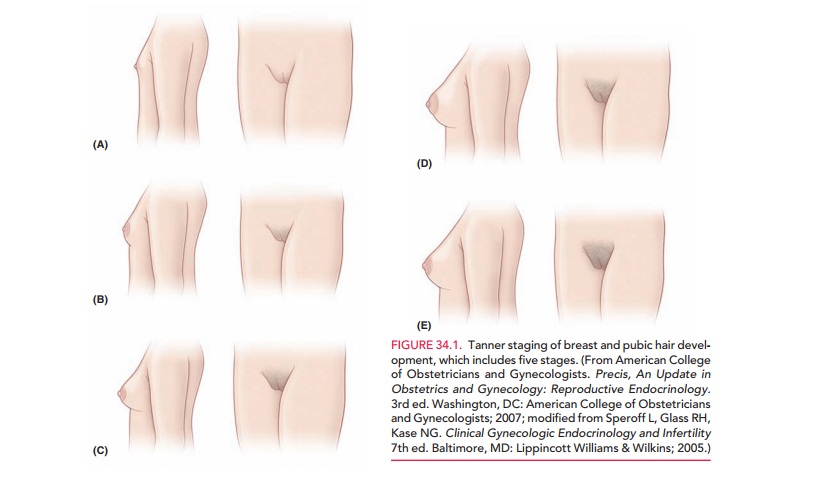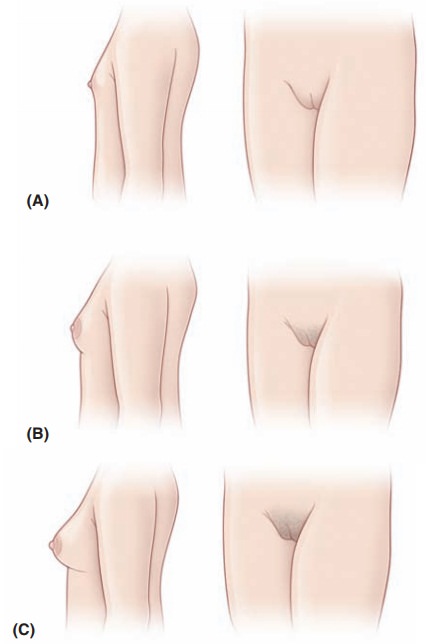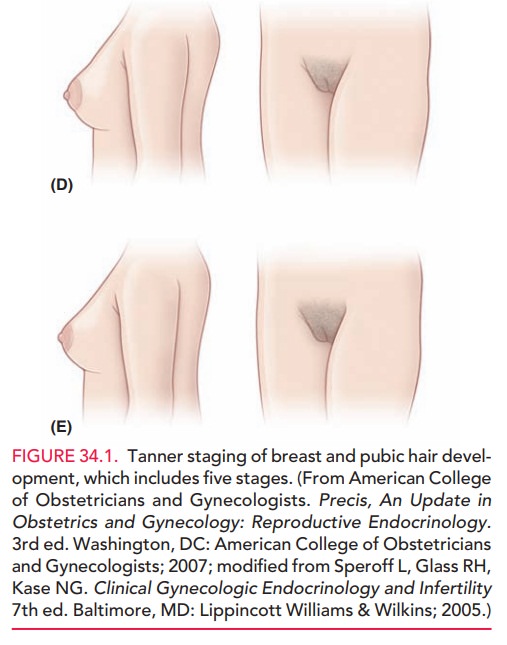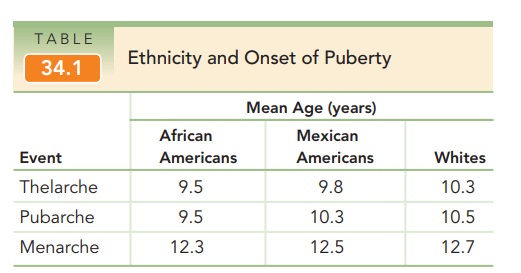Chapter: Obstetrics and Gynecology: Puberty
Normal Pubertal Development

Puberty
Puberty
is an endocrine process that involves the physical, P emotional, and sexual transition from childhood to
adult-hood. It occurs gradually in a series of
well-definedevents and milestones. When puberty is early or delayed, an understanding
of the hormonal events of puberty and the sequence of physical changes is
essential to diagnosis of a potential problem. Knowledge of the events of
puberty is also key to understanding the process of reproduction.
NORMAL PUBERTAL DEVELOPMENT
A series of endocrine events
initiate the onset of secondary sexual maturation. The
hypothalamic–pituitary–gonadal axis begins to function during fetal life and
remains active during the first few weeks following birth, after which time the
axis becomes quiescent secondary to enhanced negative feedback of estrogen. The
hypothalamic–pituitary–gonadal axis again becomes active during puberty,
triggering the production of gonadotropin-releasing hormone (GnRH). The gonadotropins
control production of sex steroids from the ovary, and higher levels cause the
physical changes of puberty. At approximately 6 to 8 years of age, adrenarche,
the increase in production of androgens, occurs in the adrenal glands.
Adrenarche involves the increased pro-duction of dehydroepiandrosterone (DHEA),
which can be converted to more potent androgens (testosterone and
dihydrotestosterone).


The
process of secondary sexual maturation requires ap-proximately 4 years. It takes
place in an orderly, predictablesequence that includes growth acceleration,
breast devel-opment (thelarche), pubic hair development (pubarche) [maximum
growth rate], menarche, and ovulation. The ini-tial event is accelerated
growth; however, this may be sub-tle, and breast budding is easier to detect as
the first event. The sequence of breast development and pubic hair growth is
referred to as Tanner’s classification of sexual maturity (Fig. 34.1).

The ages at which some of these
events occur are pre-sented in Table 34.1. There is a strong relationship
be-tween body fat content and the onset of puberty. Mild to moderate obesity
results in earlier puberty, whereas thin-ness results in later puberty. The
onset of puberty is also marked by significant ethnic differences. Puberty usually
begins earlier in African-American and Mexican-American girls than in white
girls, and much of this difference may result from differences in body mass
index (see Table 34.1). In contrast, puberty tends to begin in Asian-American
girls later than in white girls. Body mass index may account for most of this
difference, although as yet undefined genetic or environmental factors may also
be important.
Related Topics